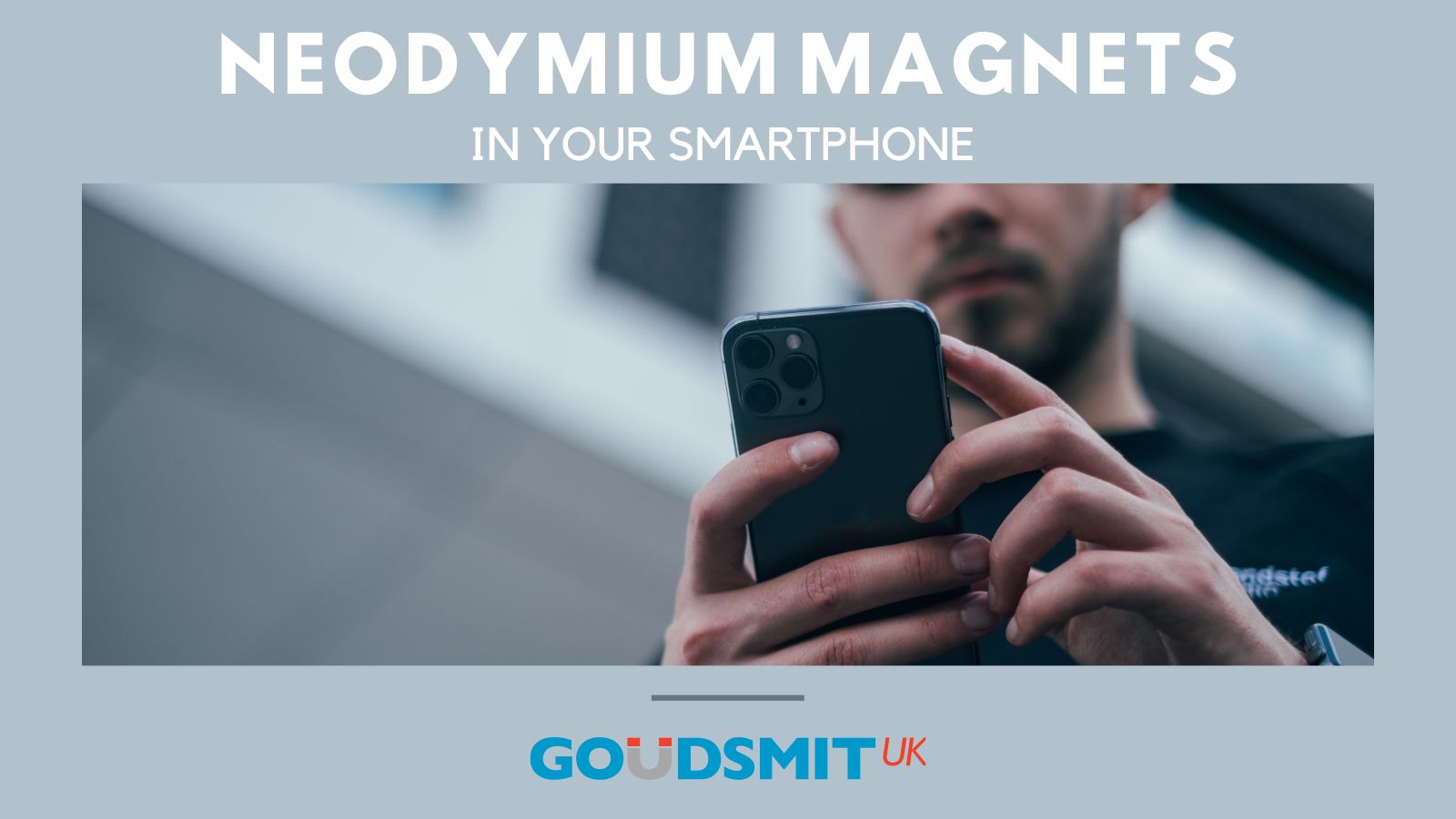Neodymium magnets have become an integral part of modern smartphone technology, playing a crucial role in various components and features.
These powerful rare-earth magnets contribute significantly to the functionality, performance, and compact design of smartphones.
In this comprehensive guide, we will explore the numerous applications of neodymium magnets in smartphones.
| Table of Contents: |
|---|
| Speakers |
| Receivers (Microphones) |
| Vibration Motors |
| Haptic Feedback |
| Camera Autofocus Mechanism |
| Magnetic Sensors |
| Earphones and Headsets |
| Magnetic Charging Connectors |
| Phone Cases and Mounts |
Neodymium Speaker Magnets
Neodymium magnets are essential components in smartphone speakers, allowing for high-quality sound reproduction in a compact form factor
Initially, smartphone speakers used single magnet designs, but as devices have become thinner and consumer demands for better audio quality have increased, manufacturers now use up to five magnets in speaker assemblies.
This multi-magnet approach allows for higher sound quality, improved reliability, and consistent performance in modern smartphones.
Since these magnets are glued into an assembly which is subject to high temperatures during the manufacturing process, engineers select magnetic grades that can withstand such environments.
Often, N48 and N52 are the magnetic grades of choice as they can withstand high temperatures during the manufacturing process and are also the strongest available grades for performance.
The use of neodymium magnets in speakers enables:
- Higher sound quality
- Improved reliability
- Consistent performance
Receiver Magnets (Microphones)
Smartphone receivers, which are essentially microphones, also utilize neodymium magnets.
Similar to speakers, receivers have evolved from single-magnet designs to two-magnet configurations to accommodate thinner smartphone design.
The use of neodymium magnets in the receiver enables a greater dynamic range to be achieved, which delivers high-fidelity reproduction of sound.
Vibration Motors
The vibration feature in smartphones, used for silent notifications and haptic feedback, relies on neodymium magnets.
Typically, vibration motors use a single neodymium magnet to create the vibration effect.
The strength and compact size of neodymium magnets make them ideal for this application, allowing for efficient vibration generation, compact motor design, and reliable performance in smartphones.
Haptic Feedback
Neodymium magnets play a crucial role in providing haptic feedback in smartphones, particularly in Apple’s Taptic Engine.
The Taptic Engine is a linear actuator that uses neodymium magnets to generate precise vibrations and haptic feedback in smartphones.
This technology was first introduced by Apple in the iPhone 6s and has since become an integral part of the user experience in iPhones.
The Taptic Engine uses neodymium magnets to convert electrical energy into mechanical motion, creating highly controlled and localized vibrations.
This allows the smartphone to provide tactile feedback that simulates the sensation of pressing physical buttons or interacting with on-screen elements.
Camera Autofocus Mechanism
Smartphone cameras utilize neodymium magnets in their autofocus motors, also known as voice coil motors (VCMs).
These motors typically require about 2-4 permanent neodymium magnets to function effectively.
The use of neodymium magnets in camera autofocus systems enables precise focusing, quick focus adjustments, and improved image quality.
Neodymium magnets are particularly suitable for this application because even a very small magnet can actuate the auto-focus mechanism in a fraction of a second, contributing to the rapid improvements in smartphone camera technology.
Magnetic Sensors
Smartphones incorporate magnetic sensors that rely on neodymium magnets for various functions, including compass applications.
These sensors allow for accurate direction finding, enhanced navigation capabilities, and seamless integration with mapping applications.
However, it’s worth noting that strong external magnets can interfere with these sensors, potentially affecting compass accuracy.
Earphones and Headsets
Although not part of the smartphone itself, earphones and headsets that accompany smartphones often use neodymium magnets.
Each set of earphones or headsets typically contains 2-4 neodymium magnets.
The use of neodymium magnets in these accessories allows for smaller earphone sizes, improved sound quality, and enhanced bass response.
The miniaturization made possible by high-tech neodymium magnets has been crucial in the development of high-quality earbuds and headphones for smartphones.
Magnetic Charging Connectors
Some smartphones and their accessories use magnetic charging connectors that incorporate neodymium magnets. These magnetic connectors offer advantages such as easy connection and disconnection, reduced wear on charging ports, and the potential for faster charging speeds.
Phone Cases and Mounts
Neodymium magnets are also used in various smartphone accessories and attachment mechanisms. Some wallet-style phone cases use small neodymium magnets to keep the case closed.
Mobile phone mounts often utilize neodymium magnets to enable secure attachment of phones to various surfaces, such as car dashboards or bicycle handlebars.
Goudsmit UK
High performance magnets from Goudsmit UK are used daily in hundreds of industrial applications worldwide. Should you have a special requirement, our team of design engineers will be happy to create a custom solution.
Additionally, a variety of complementary services from design and consultancy to logistics and warehousing can help you grow your business. Shipping approximately 10 million magnets per annum, you can count on Goudsmit UK to meet your scheduling requirements.
For more information visit our magnetic products webpage or download our products and services brochure.
Contact us today for more information at info@goudsmit.co.uk or on +44 (0) 2890 271 001







